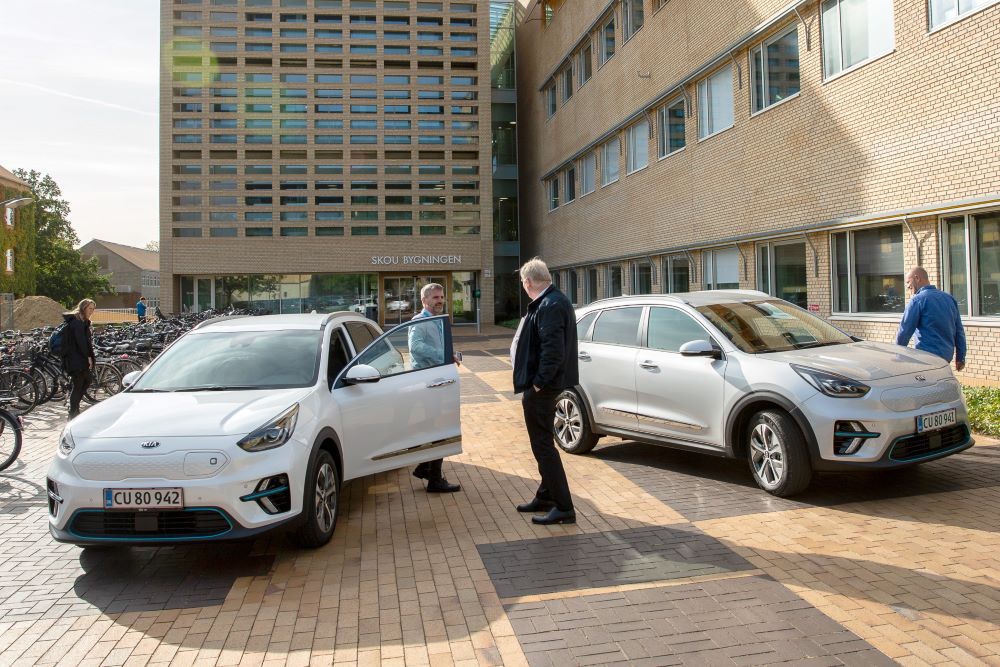- Education
-
Research
Current research
Talent
-
Collaboration
Businesses
Government agencies and institutions
Alumni
-
About AU
Organisation
Job at AU
Before 2025, AU will retire all of its petrol and diesel vehicles. From now on, all new vehicles must run on climate-friendly fuels. But will this actually make a difference? Read on to find out!
2020.10.21 |
2025 is a little more than four years away. And 2025 is the year in which Aarhus University – thanks to the new climate strategy – will have reduced its carbon emissions by 35 per cent over a 2018 baseline. This is ambitious target, and it will take concerted effort in a number of areas to reach it.
One of these areas is the university’s almost 200 diesel and petrol-powered cars. These will be phased out and replaced by more environmentally friendly electric vehicles and low-emission hybrid vehicles. A number of EV charging stations will also be installed, and employees will do less driving, as University Director Arnold Boon explained the plan.
"In the university’s climate strategy, we’ve formulated some pretty ambitious targets, and that means we have to make some major changes. And our fleet vehicles are a good place to do this. If we assume that our employees drive as much as they did last year, the switch will mean that Aarhus University will emit 210 fewer metric tons of CO2 annually. This is equivalent to 1.4 per cent of the university’s total emissions in 2018.”
Although the ink is barely dry on the new climate strategy, which was adopted in April 2020, new electric vehicles are already rolling onto campus. These vehicles are used by employees who attend meetings, conference and other events, or in connection with university operations.

The photo shows head of building services for HE, Conor Richard O'Connor Leerhøy, (left) and head of building services for Nat and Tech, Bent Lorenzen (right). They recently bought two electric cars for the administrative staff at the three faculties.
Everyone knows that electric and hybrid vehicles are better for the climate than petrol and diesel vehicles. But some calculations are necessary to figure out exactly how much they shrink our carbon footprint. Conor Richard O’Connor Leerhøy, head of building services at Health, which owns one of the university’s new EVs, explained:
"Assuming that a car drives approx. 200,000 km during its lifetime, an electric car will emit approx. 68% less CO2 during its lifetime than an average Danish petrol car. That makes a real difference. There are also a number of other advantages to electric cars. For example, they reduce urban particle pollution and noise pollution.”
When more EVs start popping up around campus, it’s important that the university's employees won’t have to waste time driving around looking for an EV charging station. So more charging stations will follow in the wake of the new EVs.
If we’re to reach the targets in the climate strategy, replacing petrol and diesel-powered vehicles and installing more charging stations is not enough. The number of km driven in connection with business travel must also be reduced. According to Arnold Boon, holding more virtual meetings is one way to accomplish this.
"The corona pandemic has taught us that many meetings can be held meaningfully online. If we can continue to do so – to the extent that it makes sense – it will be a positive development for the university and a benefit for the climate."